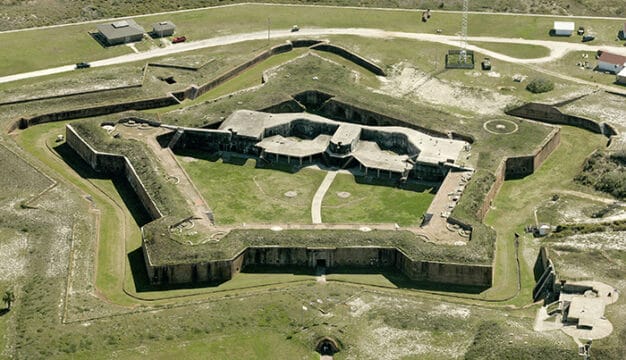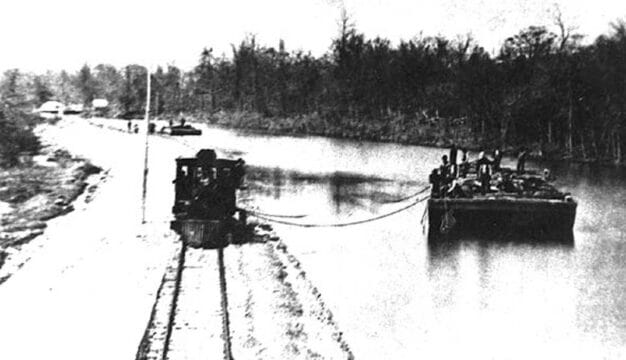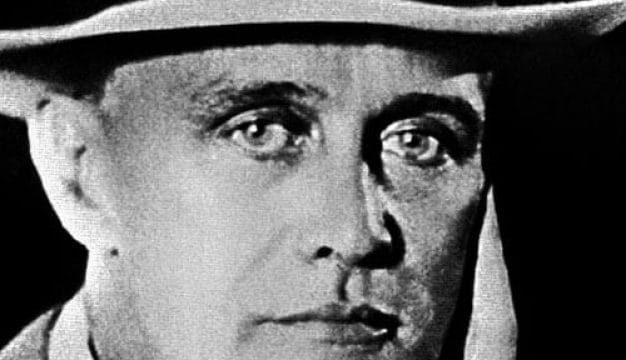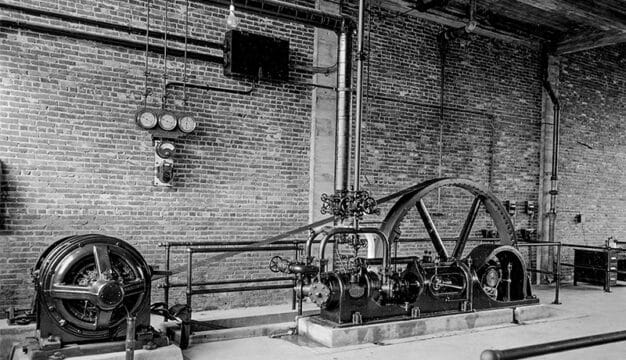Presbyterian Church in America
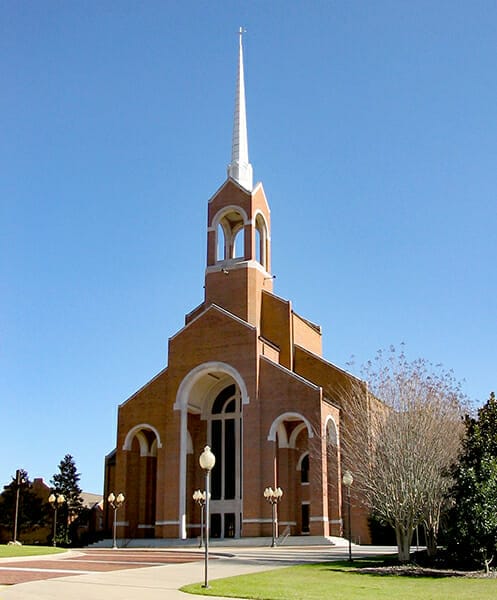 Briarwood Presbyterian Church
The Presbyterian Church in America (PCA) was founded on December 4, 1973, in Birmingham, after 260 congregations primarily from Mississippi, Alabama, and South Carolina left the Presbyterian Church in the United States (PCUS) on the grounds that a long-developing theological liberalism had come to dominate the denomination. With approximately 41,000 members at its inception, the PCA has grown to some 375,000 communicant and non-communicant members and more than 1,540 churches. Most PCA churches are found in the American South, but the PCA also has a strong presence in the mid-Atlantic states, the Midwest, and the southwestern United States. There are more than 100 PCA churches in Alabama with the greatest concentration in Birmingham and Montgomery. Alabama is also home to 10 of the 50 oldest PCA churches in the country. Mount Calvary Presbyterian Church in Pinson, founded in 1806, is the oldest PCA church in Alabama.
Briarwood Presbyterian Church
The Presbyterian Church in America (PCA) was founded on December 4, 1973, in Birmingham, after 260 congregations primarily from Mississippi, Alabama, and South Carolina left the Presbyterian Church in the United States (PCUS) on the grounds that a long-developing theological liberalism had come to dominate the denomination. With approximately 41,000 members at its inception, the PCA has grown to some 375,000 communicant and non-communicant members and more than 1,540 churches. Most PCA churches are found in the American South, but the PCA also has a strong presence in the mid-Atlantic states, the Midwest, and the southwestern United States. There are more than 100 PCA churches in Alabama with the greatest concentration in Birmingham and Montgomery. Alabama is also home to 10 of the 50 oldest PCA churches in the country. Mount Calvary Presbyterian Church in Pinson, founded in 1806, is the oldest PCA church in Alabama.
The PCA is structured according the Presbyterian system of church government. Local churches are led by a pastor (teaching elder) and elected leaders (ruling elders). The elders of individual churches collectively oversee a defined geographical jurisdiction called a presbytery. Presbyteries handle issues such as ordaining pastors, outreach, church discipline, and sending overtures to the General Assembly. The General Assembly is the annual meeting of all PCA presbyteries in the country. There are four PCA presbyteries in Alabama: Evangel Presbytery, covering the north-central region including Huntsville and Birmingham; Warrior Presbytery, covering the west-central region; Gulf Coast Presbytery, covering the Mobile area; and Southeast Presbytery, covering the south-central region including Montgomery. Evangel Presbytery and Warrior Presbytery were part of the original 16 founding presbyteries of the PCA in 1973.
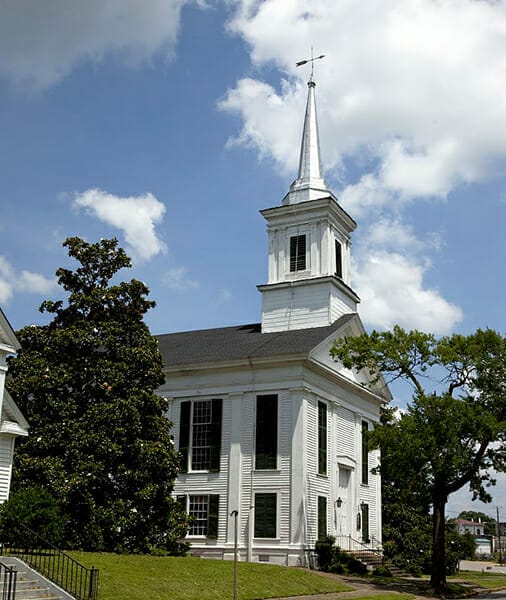 First Presbyterian Church
The PCA is a theologically conservative denomination. All PCA ministers subscribe to the Westminster Confession of Faith, written in 1646. The Westminster Confession of Faith is largely a Calvinist or reformed expression of Christianity. It affirms the authority of scripture as the word of God, humankind’s sinful condition apart from God’s grace, and God’s sovereignty over who will be saved. The PCA also places a strong emphasis on outreach. One of the principle outreach ministries sponsored by the denomination is Reformed University Fellowship (RUF), a college ministry represented in 32 states. Six Alabama campuses—Auburn University, Birmingham-Southern College, University of Alabama, University of Alabama at Birmingham, University of Alabama in Huntsville, and Samford University—have RUF chapters.
First Presbyterian Church
The PCA is a theologically conservative denomination. All PCA ministers subscribe to the Westminster Confession of Faith, written in 1646. The Westminster Confession of Faith is largely a Calvinist or reformed expression of Christianity. It affirms the authority of scripture as the word of God, humankind’s sinful condition apart from God’s grace, and God’s sovereignty over who will be saved. The PCA also places a strong emphasis on outreach. One of the principle outreach ministries sponsored by the denomination is Reformed University Fellowship (RUF), a college ministry represented in 32 states. Six Alabama campuses—Auburn University, Birmingham-Southern College, University of Alabama, University of Alabama at Birmingham, University of Alabama in Huntsville, and Samford University—have RUF chapters.
By and large, the PCA is a socially conservative denomination. Disagreements over the extent to which the denomination should try to influence political and social life abound. Some leaders stress a commitment to the supremacy of the spiritual mission of the church. Others, however, support the view that, in addition to evangelism, the denomination should engage in reforming American political and social life. Some oppose political activtism, whereas others encourage it. For example, when Alabama Supreme Court Judge Roy Moore (a Baptist) covertly installed a Ten Commandments monument in the central rotunda of Alabama’s state judicial building, D. James Kennedy, PCA pastor of Coral Ridge Presbyterian Church in Florida, provided a camera crew to record the event. Kennedy then sold videos to raise funds for Moore’s legal defense. Although many PCA ministers and laypeople oppose using the pulpit for political ends, no action has been taken by the General Assembly to stop such activity.
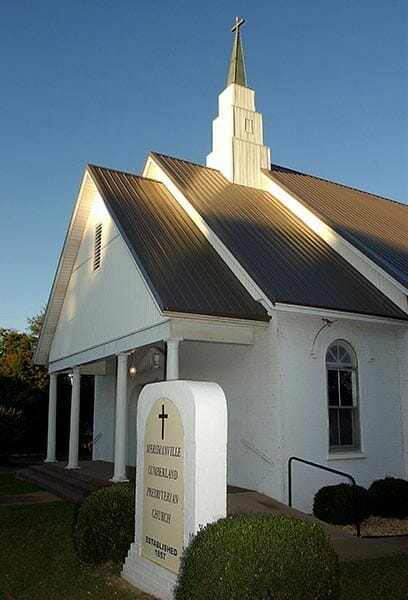 Meridianville Cumberland Presbyterian Church
The roots of the PCA can be traced to the realignment of American Presbyterianism at the outbreak of the Civil War. In 1861, the Presbyterian church, like most Protestant churches, divided along the line of Union and Confederate loyalties. Southern churches severed ties with their northern counterparts, and subsequently the northern Presbyterian churches regrouped as the United Presbyterian Church in the United States (UPCUSA, later the PCUSA). Southern Presbyterian churches united as the Presbyterian Church in the Confederate States (later the PCUS). Although church officials offered theological reasons for the split, the larger national debate over slavery and secession figured prominently in the decision to form a separate denomination. This debate raised important theological questions regarding the role churches ought to play in confronting political and social issues. Unlike many northern evangelicals, who advocated political and social activism, southern Presbyterians argued that the primary purpose of the church was to preach and administer the sacraments and avoid overt declarations about the political order. The aim of the church was not to transform social institutions, but rather to minister to individuals who would engage in efforts for social reform as private citizens. This severe separation of the sacred and the secular became known as the doctrine of the spirituality of the church, and it remained a distinctive principle of the PCUS well into the twentieth century.
Meridianville Cumberland Presbyterian Church
The roots of the PCA can be traced to the realignment of American Presbyterianism at the outbreak of the Civil War. In 1861, the Presbyterian church, like most Protestant churches, divided along the line of Union and Confederate loyalties. Southern churches severed ties with their northern counterparts, and subsequently the northern Presbyterian churches regrouped as the United Presbyterian Church in the United States (UPCUSA, later the PCUSA). Southern Presbyterian churches united as the Presbyterian Church in the Confederate States (later the PCUS). Although church officials offered theological reasons for the split, the larger national debate over slavery and secession figured prominently in the decision to form a separate denomination. This debate raised important theological questions regarding the role churches ought to play in confronting political and social issues. Unlike many northern evangelicals, who advocated political and social activism, southern Presbyterians argued that the primary purpose of the church was to preach and administer the sacraments and avoid overt declarations about the political order. The aim of the church was not to transform social institutions, but rather to minister to individuals who would engage in efforts for social reform as private citizens. This severe separation of the sacred and the secular became known as the doctrine of the spirituality of the church, and it remained a distinctive principle of the PCUS well into the twentieth century.
The doctrine of the spirituality of the church, as well as a general tendency toward social conservatism, distinguished the southern from the northern Presbyterian church. By the 1930s, however, Progressive Era theological trends that arose in northern seminaries in the late nineteenth century began to migrate southward. Many ministers in the PCUS called for a reevaluation of certain denominational positions regarding the nature of scriptural authority. Equally problematic for conservatives were attempts to involve the denomination in progressive social and political causes. In 1934, the General Assembly of the PCUS established the permanent Committee on Moral and Social Welfare. Between 1934 and 1970, the committee issued a number of reports, papers, and calls to action on topics such as economic justice, poverty, marriage, divorce, sexuality, war, race relations, and civil rights.
Conservatives perceived these moves as indicative of increasing liberalism and modernism in the denomination. In 1942, they created the Continuing Church Movement (CCM), whose members saw themselves as defenders of orthodox Presbyterianism. The CCM supported traditional Calvinist theology and resisted all efforts to unite the PCUS with Presbyterian denominations they considered theologically suspect. Some members also vigorously defended the doctrine of the spirituality of the church. In 1954, the same year the U.S. Supreme Court ordered the desegregation of public schools, the General Assembly of the PCUS established a Special Standing Committee on Christian Relations. This committee published a paper entitled “The Church and Segregation” urging Christians to help bridge the racial divide. The committee commissioned similar reports throughout the late 1950s and 1960s. Conservatives argued these reports violated their commitment to the spirituality of the church, and they argued for maintaining the segregationist status quo by citing the view that the church had no place influencing political or social policy.
In the early 1970s, frustrated conservatives began devising a plan to withdraw from the PCUS without losing legal possession of their church property. This plan came to fruition in 1973. In February of that year, the Steering Committee of the CCM adopted a resolution to form a new denomination. In December, the first General Assembly of the PCA was called to order at Briarwood Presbyterian Church in suburban Birmingham and formally established itself as the National Presbyterian Church. The name was changed in 1974 to the Presbyterian Church in America after protest from a UPCUSA congregation of the same name in Washington, D.C.
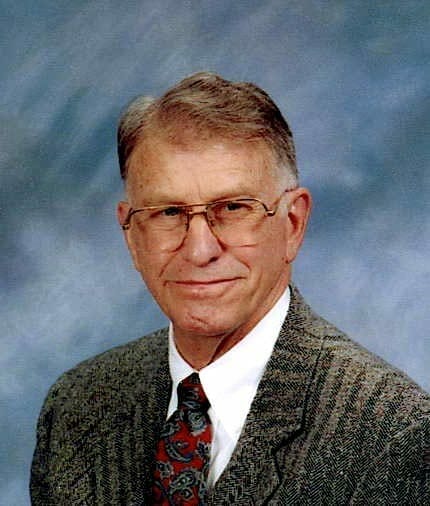 Frank Barker
Two Alabamians, Jack Williamson and Frank Barker, played prominent roles in the CCM and the formation of the PCA. W. J. (Jack) Williamson, an attorney from Greenville, was a ruling elder for the East Alabama Presbytery (later Southeast Alabama Presbytery) throughout the controversies of the 1960s and early 1970s. Williamson served on the board of the Southern Presbyterian Journal, was the secretary of conservative watchdog group Concerned Presbyterians, and was chairman of the committee overseeing the formation of the PCA. In 1973, he was elected moderator of the first General Assembly.
Frank Barker
Two Alabamians, Jack Williamson and Frank Barker, played prominent roles in the CCM and the formation of the PCA. W. J. (Jack) Williamson, an attorney from Greenville, was a ruling elder for the East Alabama Presbytery (later Southeast Alabama Presbytery) throughout the controversies of the 1960s and early 1970s. Williamson served on the board of the Southern Presbyterian Journal, was the secretary of conservative watchdog group Concerned Presbyterians, and was chairman of the committee overseeing the formation of the PCA. In 1973, he was elected moderator of the first General Assembly.
Birmingham native Frank Barker pastored Briarwood Presbyterian Church on the southeast side of metropolitan Birmingham. The church orginally met in a storefront but by 1973 had grown to more than 1,500 members. Briarwood hosted a number of meetings of the CCM as well as the first PCA General Assembly. Barker served as the pastor of Briarwood until 1999, and during his tenure, the church constructed a $32 million campus. Today, with approximately 4,100 members, Briarwood is the largest PCA church in Alabama and remains one of the largest PCA churches in the nation. Briarwood is considered by many to be the flagship church of the denomination. In 2017, it garnered national media attention for its efforts to gain permission to establish its own police force from the state government.
Further Reading
- Nutt, Rick. “The Tie That No Longer Binds: The Origins of the Presbyterian Church in America.” In The Confessional Mosaic: Presbyterians and Twentieth-Century Theology, edited by Milton J. Coalter, John M. Mulder, and Louis B. Weeks. Louisville: Westminster/John Knox Press, 1990.
- Smith, Frank J. The History of the Presbyterian Church in America: The Continuing Church Movement. Manassas, Va.: Reformational Educational Foundation, 1985.
- Thompson, Ernst Trice. Presbyterians in the South. Vol. 3: 1890-1972. Richmond, Va.: John Knox Press, 1973.
